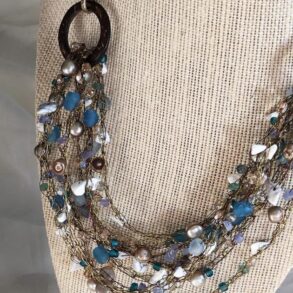
At one level, perhaps the sheer enormity of the tasks involved, the variety of media avenues, and expertise of some agencies in particular domains, might all add up to merit that. But, what often suffers as a result, is a consistency in brand communication and impression. Surely, something to be concerned about, when it comes to long-term brand equity.
To the casual, disinterested observer-which is what any consumer is IRL-subjected to myriad pieces of advertising across conventional and new age media, this can all often come across as very disjointed.
Frequently it does.
The immediacy of the opportunity. The excitement of an off-beat, clutter breaking creative. The sheer opportunism of the messaging. All can collude to relegate holistic brand narratives to the back benches of conference rooms when such matters are being discussed.
But, surely, that should not be the case.
For, what is a brand? If not something which embodies a consistency and constancy in expectation and emotion?
When these journeys are embarked upon, most brand custodians, given the paucity of time, share their brand positioning statements, taglines and some past pieces of work, with their new communication partners. Accompanied with terse instructions like, “Whatever you bring back, has to emerge from this?”
However, that is seldom a useful or a directional brief.
It can result in wild, ‘off brand’ interpretations, which can still seemingly begin with the positioning or tagline, as the starting point.
Think of how a term like “rugged workhorse”, can translate into interpretations which might make sense for a 4 wheel vehicle brand, a pair of jeans or even a brand used to clean utensils. Sounds like a recipe for mass confusion, especially in the minds of the audience being targeted.
As always, with all such ventures, it is best to encourage a return to the basics. To the very concept of what a brand is all about.
Simply put, a brand is a storytelling device. It opens the doors to a desirable world. The desirability of that world, ensures a dedicated audience base, even a fan following-unequivocally, a brand’s greatest asset.
More than a position or a tagline, it is a brand story or narrative, which might serve as better guardrails for any subsequent creative process. Especially when new parties are involved.
So, how does one design a brand story?
Typically when it comes to any creative ideation, there can be more than one method. But, taking a cue from my previous article around generating insights (attach link to old article here), let’s see how a brand story might be engineered, using a 4C structure.
Casting
Every story needs a hero to begin with. The audience needs identifiable protagonists, who, they feel, reflect their lives in some way. Relatability is key. Tough decisions also need to be taken, on who should not be cast. Leaving people out, can help sharpen the scope of what has to be said. Clean & Clear’s past storylines of assuming the role of a teenage girl’s best friend, with whom she can have the most intimate conversations, is a case in point. It certainly shuts the door on unnecessary distractions, helping build empathy and an ongoing conversation. The mini truck Tata Ace, speaks to people trying to take the steering wheel of their lives in their own hands. That message of embarking on an entrepreneurial journey, only works, when the brand addresses people already looking to change gears, on the road of life.
Coordinates
Any story gets more defined, when the audience can locate the brand’s emergence accurately in the tale. This means, one has to set the brand in time and space, when it comes to its influence in the lives of consumers. Think, how Edtech brands speak to their audiences, usually when they are alone, anxious, and contemplating how they might tackle the tough challenges coming up. Consider, in this era of hyper-localisation, how brands for sensitive teeth-from Sensodyne to Emoform-have narratives which begin at the precise moment something cold is bitten into. Media issues aside, getting brand stories to incorporate these time and space imperatives in their plots, hones their focus. They help better navigate the brand’s ability to land its message emphatically in consumer minds.
Colour
Brands, at their most potent, are entities which are associated with specific feelings and emotions. This pillar, often the most neglected, perhaps has to be the one which needs to be the most adhered to. The emotional palette of a brand, kindles stimuli for what kind of colors, shapes, moods and environments, the final creative can exploit. And that really brings the brand story-and all subsequent communication thereof-alive, in the most meaningful manner. Tata Tea seeks to disrupt and challenge the lackadaisical norm. That’s why, all messaging emerging from it, has an aspect of an eye-opening, shaking the system, kind of nature. Amazon, adopts an endearing attitude and persona, of instantly getting Indian families what they need, which kindles warm instances between them-if you will pardon the wordplay. It is of paramount importance to endow the brand with the right emotional shell. Else, the wrong colors, can often lead people astray. As anyone at a traffic signal would readily concur.
Curvature
Directors, from Satyajit Ray to Spielberg, will tell you: Status quo, does not make for a good story. There always needs to be a conflict of some sort, which has to get resolved. Some insight from deep in the consumer’s psyche, which communication efforts need to address. In some sense, brands are enablers which help us overcome particular problems in our lives. That’s why, a brand story always needs to trace a curve-hopefully always from down to up. HDFC Life reframed conversations around life insurance, from cursory ‘what happens after death’ dialogues, to interesting ‘how does one better live’ possibilities. This, with its many “Sar Utha Ke Jiyo” campaigns. An entire gamut of social media brands-Facebook, X, Instagram, YouTube and more-took a once helpless audience, subject to what mainstream media would feed them, and put the mic and camera in their hands, giving them an opportunity to broadcast. Every brand story, needs to clearly show its consumers, how it is helping make their lives better. The more evocative they are in this department, the steeper the curve of the brand’s profits.
In conclusion, a brand story can be a short paragraph of 3-4 lines, which dwells on these aspects. It should never be confused for a brand film. It is more of a lighthouse, which guides and inspires the creative process. Providing a defined framework for ideation to prosper within. Helping catalyse more potent concepts, which truly present the brand in the right light. It might involve a bit of cerebral rigour, but it totally worth it. Put another way, if we neglect these ‘4C’s’, there is possibility that all communication which emerges, might leave us all at sea.
“,”next_sibling”:[{“msid”:111312770,”title”:”PayU’s LazyPay expands quick commerce partnership with Blinkit addition”,”entity_type”:”ARTICLE”,”link”:”/news/marketing/payus-lazypay-expands-quick-commerce-partnership-with-blinkit-addition/111312770″,”link_next_mobile”:”/news/marketing/payus-lazypay-expands-quick-commerce-partnership-with-blinkit-addition/111312770?next=1″,”category_name”:null,”category_name_seo”:”marketing”}],”related_content”:[],”seoschemas”:false,”social_share”:{“fb”:”/news/marketing/the-art-of-cing-a-brand-story/111328126?utm_source=facebook&utm_medium={{DEVICE_TYPE}}”,”x”:”/news/marketing/the-art-of-cing-a-brand-story/111328126?utm_source=twitter&utm_medium={{DEVICE_TYPE}}”,”whatsapp”:”/news/marketing/the-art-of-cing-a-brand-story/111328126?utm_source=wapp&utm_medium={{DEVICE_TYPE}}”,”linkdin”:”/news/marketing/the-art-of-cing-a-brand-story/111328126?utm_source=linkedin&utm_medium={{DEVICE_TYPE}}”,”telegram”:”/news/marketing/the-art-of-cing-a-brand-story/111328126?utm_source=telegram&utm_medium={{DEVICE_TYPE}}”,”copy”:”/news/marketing/the-art-of-cing-a-brand-story/111328126?utm_source=copy&utm_medium={{DEVICE_TYPE}}”},”msid”:111328126,”entity_type”:”ARTICLE”,”title”:”The art of u2018Cu2019ing a brand Story”,”synopsis”:”These days, it has become common practice for brand marketers, to share the communication duties around with a host of partners. The old slogan of Samsung: u201cEveryoneu2019s invitedu201d, seems to resound in office corridors, as any new marketing challenge entails an immediate resolution coupled with a blanket invitation. At one level, perhaps the sheer enormity of the tasks involved, the variety of media avenues, and expertise of some agencies in particular domains, might all add up to merit that. “,”titleseo”:”marketing/the-art-of-cing-a-brand-story”,”status”:”ACTIVE”,”authors”:[{“author_name”:”Vinay Kanchan”,”author_link”:”/author/479257064/vinay-kanchan”,”author_image”:”https://etimg.etb2bimg.com/authorthumb/479257064.cms?width=250&height=250&imgsize=13282″,”author_additional”:false}],”Alttitle”:{“minfo”:””},”next_promo_stories”:[{“id”:”109135941″,”type”:”next_video”}],”artag”:false,”artdate”:”2024-06-28 08:08:14″,”lastupd”:”2024-06-28 08:08:20″,”breadcrumbTags”:[“instagram”,”brand story”,”brand communication”,”brand narrative”,”brand positioning”,”Samsung”,”sensodyne”,”amazon”,”Tata Tea”,”Youtube”],”secinfo”:{“seolocation”:”marketing/the-art-of-cing-a-brand-story”}}” data-authors=”[” vinay data-category-name=”Marketing” data-category_id=”381″ data-date=”2024-06-28″ data-index=”article_1″>
These days, it has become common practice for brand marketers, to share the communication duties around with a host of partners. The old slogan of Samsung: “Everyone’s invited”, seems to resound in office corridors, as any new marketing challenge entails an immediate resolution coupled with a blanket invitation. At one level, perhaps the sheer enormity of the tasks involved, the variety of media avenues, and expertise of some agencies in particular domains, might all add up to merit that.

At one level, perhaps the sheer enormity of the tasks involved, the variety of media avenues, and expertise of some agencies in particular domains, might all add up to merit that. But, what often suffers as a result, is a consistency in brand communication and impression. Surely, something to be concerned about, when it comes to long-term brand equity.
To the casual, disinterested observer-which is what any consumer is IRL-subjected to myriad pieces of advertising across conventional and new age media, this can all often come across as very disjointed.
Frequently it does.
The immediacy of the opportunity. The excitement of an off-beat, clutter breaking creative. The sheer opportunism of the messaging. All can collude to relegate holistic brand narratives to the back benches of conference rooms when such matters are being discussed.
But, surely, that should not be the case.
For, what is a brand? If not something which embodies a consistency and constancy in expectation and emotion?
When these journeys are embarked upon, most brand custodians, given the paucity of time, share their brand positioning statements, taglines and some past pieces of work, with their new communication partners. Accompanied with terse instructions like, “Whatever you bring back, has to emerge from this?”
However, that is seldom a useful or a directional brief.
It can result in wild, ‘off brand’ interpretations, which can still seemingly begin with the positioning or tagline, as the starting point.
Think of how a term like “rugged workhorse”, can translate into interpretations which might make sense for a 4 wheel vehicle brand, a pair of jeans or even a brand used to clean utensils. Sounds like a recipe for mass confusion, especially in the minds of the audience being targeted.
As always, with all such ventures, it is best to encourage a return to the basics. To the very concept of what a brand is all about.
Simply put, a brand is a storytelling device. It opens the doors to a desirable world. The desirability of that world, ensures a dedicated audience base, even a fan following-unequivocally, a brand’s greatest asset.
More than a position or a tagline, it is a brand story or narrative, which might serve as better guardrails for any subsequent creative process. Especially when new parties are involved.
So, how does one design a brand story?
Typically when it comes to any creative ideation, there can be more than one method. But, taking a cue from my previous article around generating insights (attach link to old article here), let’s see how a brand story might be engineered, using a 4C structure.
Casting
Every story needs a hero to begin with. The audience needs identifiable protagonists, who, they feel, reflect their lives in some way. Relatability is key. Tough decisions also need to be taken, on who should not be cast. Leaving people out, can help sharpen the scope of what has to be said. Clean & Clear’s past storylines of assuming the role of a teenage girl’s best friend, with whom she can have the most intimate conversations, is a case in point. It certainly shuts the door on unnecessary distractions, helping build empathy and an ongoing conversation. The mini truck Tata Ace, speaks to people trying to take the steering wheel of their lives in their own hands. That message of embarking on an entrepreneurial journey, only works, when the brand addresses people already looking to change gears, on the road of life.
Coordinates
Any story gets more defined, when the audience can locate the brand’s emergence accurately in the tale. This means, one has to set the brand in time and space, when it comes to its influence in the lives of consumers. Think, how Edtech brands speak to their audiences, usually when they are alone, anxious, and contemplating how they might tackle the tough challenges coming up. Consider, in this era of hyper-localisation, how brands for sensitive teeth-from Sensodyne to Emoform-have narratives which begin at the precise moment something cold is bitten into. Media issues aside, getting brand stories to incorporate these time and space imperatives in their plots, hones their focus. They help better navigate the brand’s ability to land its message emphatically in consumer minds.
Colour
Brands, at their most potent, are entities which are associated with specific feelings and emotions. This pillar, often the most neglected, perhaps has to be the one which needs to be the most adhered to. The emotional palette of a brand, kindles stimuli for what kind of colors, shapes, moods and environments, the final creative can exploit. And that really brings the brand story-and all subsequent communication thereof-alive, in the most meaningful manner. Tata Tea seeks to disrupt and challenge the lackadaisical norm. That’s why, all messaging emerging from it, has an aspect of an eye-opening, shaking the system, kind of nature. Amazon, adopts an endearing attitude and persona, of instantly getting Indian families what they need, which kindles warm instances between them-if you will pardon the wordplay. It is of paramount importance to endow the brand with the right emotional shell. Else, the wrong colors, can often lead people astray. As anyone at a traffic signal would readily concur.
Curvature
Directors, from Satyajit Ray to Spielberg, will tell you: Status quo, does not make for a good story. There always needs to be a conflict of some sort, which has to get resolved. Some insight from deep in the consumer’s psyche, which communication efforts need to address. In some sense, brands are enablers which help us overcome particular problems in our lives. That’s why, a brand story always needs to trace a curve-hopefully always from down to up. HDFC Life reframed conversations around life insurance, from cursory ‘what happens after death’ dialogues, to interesting ‘how does one better live’ possibilities. This, with its many “Sar Utha Ke Jiyo” campaigns. An entire gamut of social media brands-Facebook, X, Instagram, YouTube and more-took a once helpless audience, subject to what mainstream media would feed them, and put the mic and camera in their hands, giving them an opportunity to broadcast. Every brand story, needs to clearly show its consumers, how it is helping make their lives better. The more evocative they are in this department, the steeper the curve of the brand’s profits.
In conclusion, a brand story can be a short paragraph of 3-4 lines, which dwells on these aspects. It should never be confused for a brand film. It is more of a lighthouse, which guides and inspires the creative process. Providing a defined framework for ideation to prosper within. Helping catalyse more potent concepts, which truly present the brand in the right light. It might involve a bit of cerebral rigour, but it totally worth it. Put another way, if we neglect these ‘4C’s’, there is possibility that all communication which emerges, might leave us all at sea.

At one level, perhaps the sheer enormity of the tasks involved, the variety of media avenues, and expertise of some agencies in particular domains, might all add up to merit that. But, what often suffers as a result, is a consistency in brand communication and impression. Surely, something to be concerned about, when it comes to long-term brand equity.
To the casual, disinterested observer-which is what any consumer is IRL-subjected to myriad pieces of advertising across conventional and new age media, this can all often come across as very disjointed.
Frequently it does.
The immediacy of the opportunity. The excitement of an off-beat, clutter breaking creative. The sheer opportunism of the messaging. All can collude to relegate holistic brand narratives to the back benches of conference rooms when such matters are being discussed.
But, surely, that should not be the case.
For, what is a brand? If not something which embodies a consistency and constancy in expectation and emotion?
When these journeys are embarked upon, most brand custodians, given the paucity of time, share their brand positioning statements, taglines and some past pieces of work, with their new communication partners. Accompanied with terse instructions like, “Whatever you bring back, has to emerge from this?”
However, that is seldom a useful or a directional brief.
It can result in wild, ‘off brand’ interpretations, which can still seemingly begin with the positioning or tagline, as the starting point.
Think of how a term like “rugged workhorse”, can translate into interpretations which might make sense for a 4 wheel vehicle brand, a pair of jeans or even a brand used to clean utensils. Sounds like a recipe for mass confusion, especially in the minds of the audience being targeted.
As always, with all such ventures, it is best to encourage a return to the basics. To the very concept of what a brand is all about.
Simply put, a brand is a storytelling device. It opens the doors to a desirable world. The desirability of that world, ensures a dedicated audience base, even a fan following-unequivocally, a brand’s greatest asset.
More than a position or a tagline, it is a brand story or narrative, which might serve as better guardrails for any subsequent creative process. Especially when new parties are involved.
So, how does one design a brand story?
Typically when it comes to any creative ideation, there can be more than one method. But, taking a cue from my previous article around generating insights (attach link to old article here), let’s see how a brand story might be engineered, using a 4C structure.
Casting
Every story needs a hero to begin with. The audience needs identifiable protagonists, who, they feel, reflect their lives in some way. Relatability is key. Tough decisions also need to be taken, on who should not be cast. Leaving people out, can help sharpen the scope of what has to be said. Clean & Clear’s past storylines of assuming the role of a teenage girl’s best friend, with whom she can have the most intimate conversations, is a case in point. It certainly shuts the door on unnecessary distractions, helping build empathy and an ongoing conversation. The mini truck Tata Ace, speaks to people trying to take the steering wheel of their lives in their own hands. That message of embarking on an entrepreneurial journey, only works, when the brand addresses people already looking to change gears, on the road of life.
Coordinates
Any story gets more defined, when the audience can locate the brand’s emergence accurately in the tale. This means, one has to set the brand in time and space, when it comes to its influence in the lives of consumers. Think, how Edtech brands speak to their audiences, usually when they are alone, anxious, and contemplating how they might tackle the tough challenges coming up. Consider, in this era of hyper-localisation, how brands for sensitive teeth-from Sensodyne to Emoform-have narratives which begin at the precise moment something cold is bitten into. Media issues aside, getting brand stories to incorporate these time and space imperatives in their plots, hones their focus. They help better navigate the brand’s ability to land its message emphatically in consumer minds.
Colour
Brands, at their most potent, are entities which are associated with specific feelings and emotions. This pillar, often the most neglected, perhaps has to be the one which needs to be the most adhered to. The emotional palette of a brand, kindles stimuli for what kind of colors, shapes, moods and environments, the final creative can exploit. And that really brings the brand story-and all subsequent communication thereof-alive, in the most meaningful manner. Tata Tea seeks to disrupt and challenge the lackadaisical norm. That’s why, all messaging emerging from it, has an aspect of an eye-opening, shaking the system, kind of nature. Amazon, adopts an endearing attitude and persona, of instantly getting Indian families what they need, which kindles warm instances between them-if you will pardon the wordplay. It is of paramount importance to endow the brand with the right emotional shell. Else, the wrong colors, can often lead people astray. As anyone at a traffic signal would readily concur.
Curvature
Directors, from Satyajit Ray to Spielberg, will tell you: Status quo, does not make for a good story. There always needs to be a conflict of some sort, which has to get resolved. Some insight from deep in the consumer’s psyche, which communication efforts need to address. In some sense, brands are enablers which help us overcome particular problems in our lives. That’s why, a brand story always needs to trace a curve-hopefully always from down to up. HDFC Life reframed conversations around life insurance, from cursory ‘what happens after death’ dialogues, to interesting ‘how does one better live’ possibilities. This, with its many “Sar Utha Ke Jiyo” campaigns. An entire gamut of social media brands-Facebook, X, Instagram, YouTube and more-took a once helpless audience, subject to what mainstream media would feed them, and put the mic and camera in their hands, giving them an opportunity to broadcast. Every brand story, needs to clearly show its consumers, how it is helping make their lives better. The more evocative they are in this department, the steeper the curve of the brand’s profits.
In conclusion, a brand story can be a short paragraph of 3-4 lines, which dwells on these aspects. It should never be confused for a brand film. It is more of a lighthouse, which guides and inspires the creative process. Providing a defined framework for ideation to prosper within. Helping catalyse more potent concepts, which truly present the brand in the right light. It might involve a bit of cerebral rigour, but it totally worth it. Put another way, if we neglect these ‘4C’s’, there is possibility that all communication which emerges, might leave us all at sea.
Read also
“,”next_sibling”:[{“msid”:111312770,”title”:”PayU’s LazyPay expands quick commerce partnership with Blinkit addition”,”entity_type”:”ARTICLE”,”link”:”/news/marketing/payus-lazypay-expands-quick-commerce-partnership-with-blinkit-addition/111312770″,”link_next_mobile”:”/news/marketing/payus-lazypay-expands-quick-commerce-partnership-with-blinkit-addition/111312770?next=1″,”category_name”:null,”category_name_seo”:”marketing”}],”related_content”:[],”seoschemas”:false,”social_share”:{“fb”:”/news/marketing/the-art-of-cing-a-brand-story/111328126?utm_source=facebook&utm_medium={{DEVICE_TYPE}}”,”x”:”/news/marketing/the-art-of-cing-a-brand-story/111328126?utm_source=twitter&utm_medium={{DEVICE_TYPE}}”,”whatsapp”:”/news/marketing/the-art-of-cing-a-brand-story/111328126?utm_source=wapp&utm_medium={{DEVICE_TYPE}}”,”linkdin”:”/news/marketing/the-art-of-cing-a-brand-story/111328126?utm_source=linkedin&utm_medium={{DEVICE_TYPE}}”,”telegram”:”/news/marketing/the-art-of-cing-a-brand-story/111328126?utm_source=telegram&utm_medium={{DEVICE_TYPE}}”,”copy”:”/news/marketing/the-art-of-cing-a-brand-story/111328126?utm_source=copy&utm_medium={{DEVICE_TYPE}}”},”msid”:111328126,”entity_type”:”ARTICLE”,”title”:”The art of u2018Cu2019ing a brand Story”,”synopsis”:”These days, it has become common practice for brand marketers, to share the communication duties around with a host of partners. The old slogan of Samsung: u201cEveryoneu2019s invitedu201d, seems to resound in office corridors, as any new marketing challenge entails an immediate resolution coupled with a blanket invitation. At one level, perhaps the sheer enormity of the tasks involved, the variety of media avenues, and expertise of some agencies in particular domains, might all add up to merit that. “,”titleseo”:”marketing/the-art-of-cing-a-brand-story”,”status”:”ACTIVE”,”authors”:[{“author_name”:”Vinay Kanchan”,”author_link”:”/author/479257064/vinay-kanchan”,”author_image”:”https://etimg.etb2bimg.com/authorthumb/479257064.cms?width=250&height=250&imgsize=13282″,”author_additional”:false}],”Alttitle”:{“minfo”:””},”next_promo_stories”:[{“id”:”109135941″,”type”:”next_video”}],”artag”:false,”artdate”:”2024-06-28 08:08:14″,”lastupd”:”2024-06-28 08:08:20″,”breadcrumbTags”:[“instagram”,”brand story”,”brand communication”,”brand narrative”,”brand positioning”,”Samsung”,”sensodyne”,”amazon”,”Tata Tea”,”Youtube”],”secinfo”:{“seolocation”:”marketing/the-art-of-cing-a-brand-story”}}” data-news_link=”https://brandequity.economictimes.indiatimes.com/news/marketing/the-art-of-cing-a-brand-story/111328126″>














